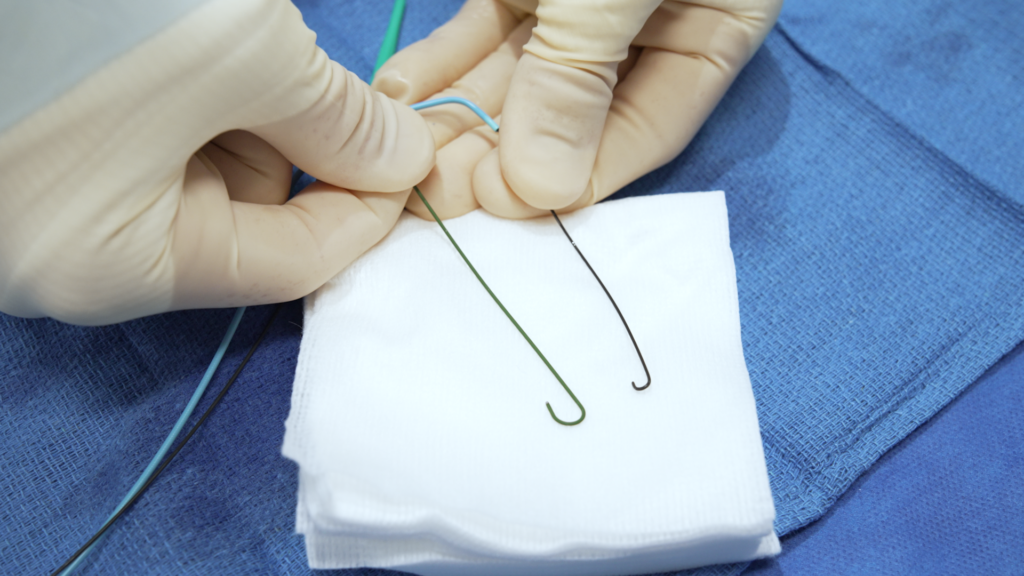An innovative study undertaken at Gosford and John Hunter hospitals is aiming to make heart procedures safer, less painful and faster for patients undergoing treatment for blocked arteries.
Central Coast Local Health District cardiologist, Associate Professor Tom Ford, said the EAGER (Enhancing Guidewire Efficacy for Transradial Access) study was designed to see if using a different guidewire in cardiac procedures would make heart procedures from the wrist more efficient.
“Traditionally when treating patients for blocked arteries, clinicians used a transfemoral approach, which means they accessed the heart by inserting a guidewire into an artery located in the patient’s groin,” Ford said.
“For the past 10-15 years it has become increasingly recognised that procedures from the patient’s wrist (transradial) are safer and have a lower risk of adverse outcomes including death, especially after heart attack.
“The transradial approach allows patients to move sooner following the procedure and it is also easier to stop bleeding after the procedure.
“Up until this study, the guidewire used to navigate to the heart has not changed despite the artery in the wrist being far smaller than the artery in the groin, especially in women.”
The EAGER study found that using a smaller guidewire, which is called the Baby J, significantly improved the success and safety of heart procedures performed through the wrist when compared to procedures performed using the traditional guidewire.
“The study showed the new wire has a higher likelihood of success,” Ford said.
“Women in particular had a 35 per cent higher likelihood of procedural success compared to those using the traditional wire.
“The new guidewire made the cardiac procedures less painful and reduced the procedure time by allowing swift navigation of equipment up the arm.
“The reduced time also helped reduce radiation exposure for patients and staff.
“This technology is especially beneficial for women, who are more prone to complications including bleeding after heart procedures.
“The results of the EAGER study will improve the experience of our patients by offering faster, minimally invasive heart treatments, ensuring better outcomes and comfort.
“The use of the Baby J wire is now standard practice for many of us, and I pay credit to the patients who participated in the study, as well as all the staff who helped deliver this research.”

Gail Furchert of Wyongah recently underwent coronary testing for angina using the Baby J guidewire.
“As soon as the procedure started it felt like it was over, and I didn’t feel a thing,” she said.
“Following the procedure, I had mild pain in the hand for a couple of days but otherwise I felt completely fine – it was no big deal whatsoever.”
The first author of the EAGER study Dr Adam Bland, who delivered the study during his advanced training in cardiology, said he hoped the study would have wider implications for improving patient care.
“Our work has recently been presented in London at the European Society of Cardiology, the largest international cardiology meeting and also simultaneously published in a leading interventional cardiology journal (Circulation: Cardiovascular Interventions),” he said.
“We hope this study will lead to practice changes and improved safety for patients at other hospitals within Australia and beyond.
“I am proud of the innovative work being done here on the Central Coast and in the Hunter to improve patient care and comfort.
“Small changes can accrue with time to drive large benefits for our patients.”



